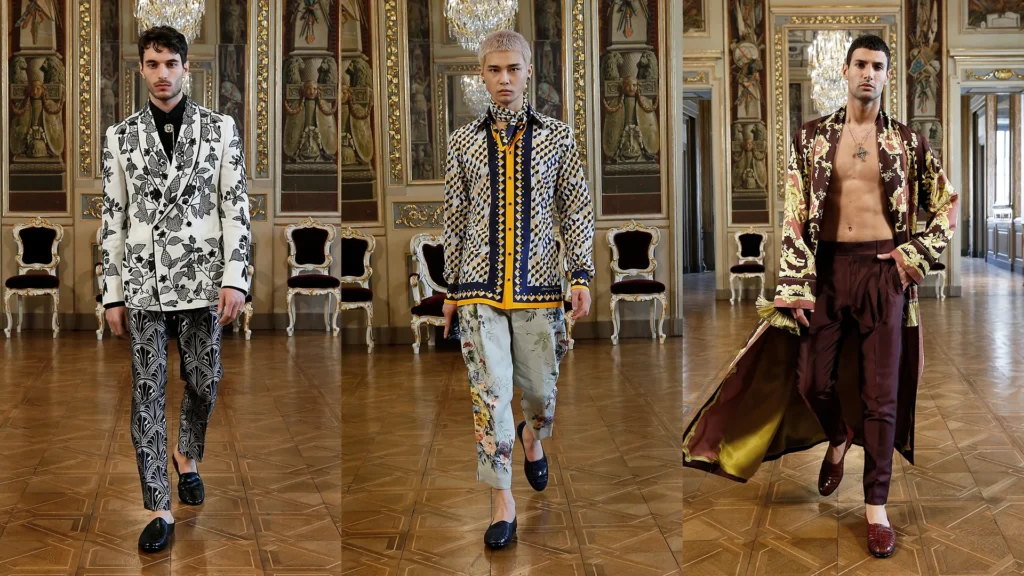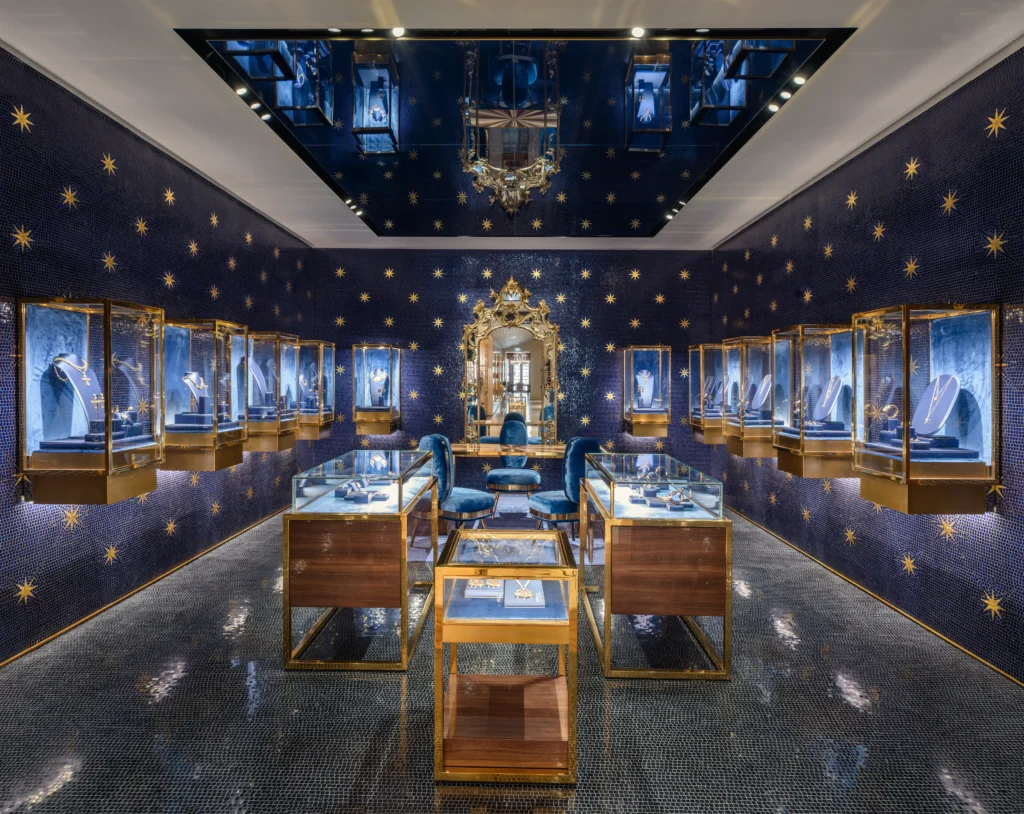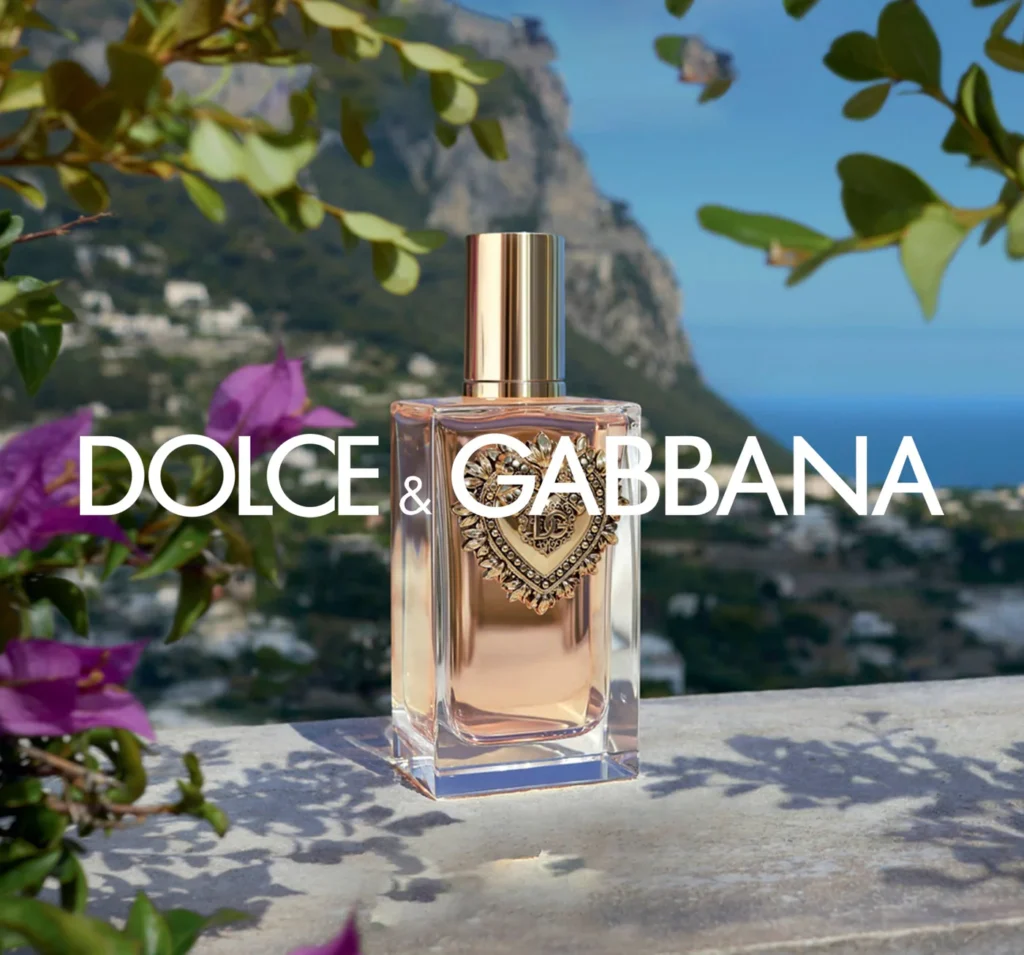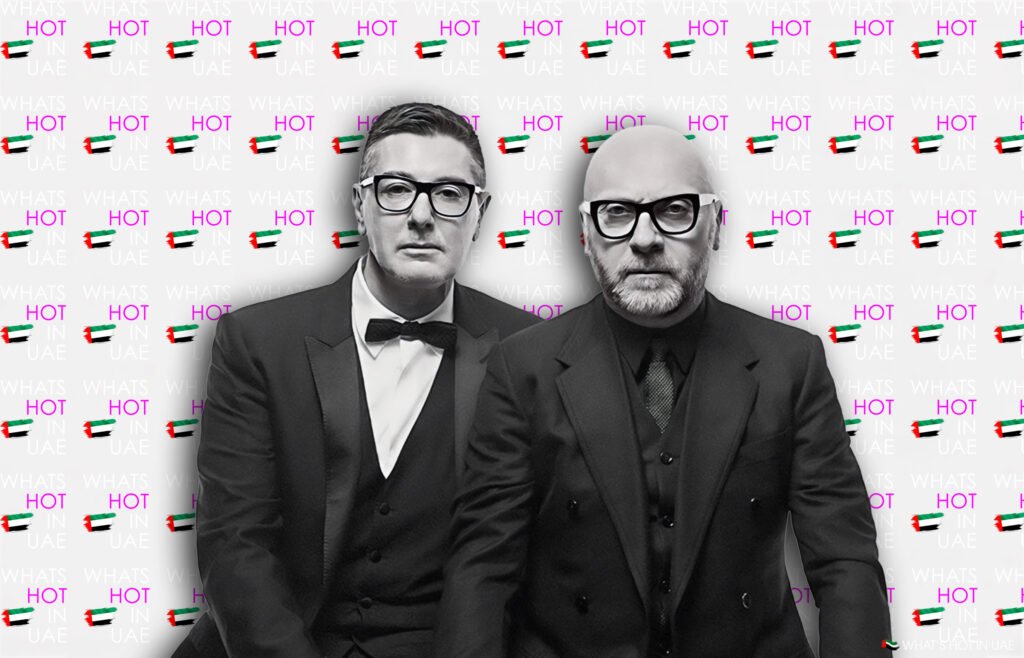Dolce & Gabbana. The name itself evokes a world of opulent Italian glamour, of Sicilian sensuality and unapologetic luxury. For decades, the brand has stood as a titan of the fashion industry, celebrated for its artistic genius and its profound impact on style. Yet, this legacy of creative brilliance is inextricably linked to a history plagued by controversy and self-inflicted wounds. Most narratives either glorify the brand’s iconic designs or focus solely on its litany of scandals. The full, unvarnished history of Dolce & Gabbana is rarely told in one place.
This is that story. We will provide the single most comprehensive chronicle of the D&G brand, reconciling its undeniable contributions to fashion with the critical missteps that have defined its modern identity. We will explore the genesis of the founders’ vision, deconstruct the unmistakable aesthetic that took the world by storm, and provide an unflinching, data-driven look at the controversies and their tangible aftermath. From their rise in Milan to their strategic expansion in the UAE, this is the complete history of Dolce & Gabbana—a brand forged in the duality of genius and controversy.
The Genesis: Who Are the Founders of Dolce & Gabbana?
The D&G brand story begins with the meeting of two creative minds from distinctly different worlds: Domenico Dolce and Stefano Gabbana. Their partnership is a classic tale of complementary talents fusing to create something greater than the sum of its parts.
Domenico Dolce, born in Sicily in 1958, was steeped in the world of tailoring from a young age. His father was a tailor, and Dolce’s roots in traditional craftsmanship and the art of the perfect silhouette would become a foundational pillar of the brand. In contrast, Stefano Gabbana, born in Milan in 1962, came from a background in graphic design and marketing. His eye for bold visuals, branding, and provocative imagery provided the perfect counterpoint to Dolce’s classical sensibilities.
The two met in Milan in the early 1980s while working as assistants at an atelier. They soon began a design consultancy, and in 1985, they officially founded Dolce & Gabbana in Legnano, Italy. Their vision was clear: to create a new form of elegance, one that was sensual, Mediterranean, and deeply personal. They wanted to move away from the power-dressing of the era and create clothes for real women, celebrating their femininity and form. This foundational vision, born from the fusion of Sicilian tradition and Milanese modernity, set the stage for their meteoric rise. For those seeking more details on their early life, the Britannica Biography of Dolce & Gabbana offers a deeper dive.

Forging an Empire: The Unmistakable Sicilian Aesthetic
In a fashion landscape that was increasingly veering towards minimalism in the late 80s and 90s, Dolce & Gabbana’s aesthetic was a vibrant, maximalist rebellion. Their signature style was not just a collection of clothes; it was a celebration of a specific cultural identity rooted in Sicilian heritage.
Authoritative fashion publication Vogue expertly defines the duo as “masters of Sicilian sensuality,” noting that their collections are “an overt celebration of the female form, with an emphasis on corsetry, lingerie, and nipped-in waists” [1]. This focus on overtly feminine garments stood in stark contrast to the prevailing trends of the time. As The Business of Fashion highlights, throughout the 1990s, “the duo were famed for their overtly feminine, colourful garments, which stood in stark contrast to the wave of minimalism that was sweeping across fashion at the time” [2].
Their aesthetic is built on a rich tapestry of recurring motifs, each a nod to Italian life and culture:
- Black Lace: Evoking images of Sicilian widows and traditional Catholic mourning dress, repurposed into something sensual and powerful.
- Religious Iconography: Cherubs, crosses, and filigree details borrowed from Italian cathedrals and translated onto opulent fabrics.
- Vibrant Florals: Bold rose and carnation prints that speak to the lush landscapes of the Mediterranean.
- Animal Prints: Leopard print, in particular, became a house signature, representing a wild, untamed femininity.
This powerful combination of sacred and profane, of tradition and sensuality, created a brand identity that was instantly recognizable and deeply compelling. To see archival examples of their work, one can explore the collection of Dolce & Gabbana at The Met Museum.
The ‘Sicilian Dress’: An Icon is Born
Perhaps no single garment better encapsulates the brand’s DNA than “The Sicilian Dress.” First appearing in their early collections, this form-fitting, often black, sheath dress became the ultimate expression of D&G’s vision. It was simple in concept but revolutionary in its impact, celebrating the female silhouette with an honesty and confidence that was both timeless and modern.
Its importance in fashion history is undisputed. The Sicilian Dress was named one of the 100 most important dresses ever designed by author Hal Rubenstein [3]. It transcended trends, becoming a staple for icons from Monica Bellucci to Angelina Jolie, and cemented the brand’s reputation as the architects of modern Italian glamour.
A Pattern of Controversy: An Unflinching Timeline of Missteps
For all its artistic success, the history of Dolce & Gabbana is also a case study in brand challenges and public relations crises. The brand’s trajectory has been marked by a recurring pattern of offensive statements, culturally insensitive campaigns, and a seeming inability to learn from past mistakes. This section provides a balanced, chronological look at the major controversies that have come to define their public image.

Early Transgressions: From ‘Slave Sandals’ to Controversial Ads
Long before their most infamous scandal, the brand demonstrated a penchant for courting controversy. In 2007, an advertising campaign was widely condemned and eventually pulled in Spain after critics argued it romanticized gang rape. The ad depicted a woman being held down by a man while other men looked on.
Years later, in 2016, the brand faced backlash for listing a pair of ornate pom-pom footwear on their website as “Slave Sandals.” The name was quickly changed after public outcry, but it highlighted a significant lack of cultural awareness. These incidents, along with controversial comments made by the designers regarding IVF and same-sex parenting, began to establish a historical pattern of behavior that would culminate in their biggest crisis to date.
The 2018 China Scandal: A Brand in Crisis
In November 2018, Dolce & Gabbana was poised to stage “The Great Show,” a massive runway event in Shanghai. In the lead-up, they released a series of promotional videos titled “Eating with Chopsticks.” The videos featured a Chinese model struggling to eat Italian food like pizza and cannoli with chopsticks, accompanied by a patronizing male narrator.
The campaign was immediately decried as racist, stereotypical, and deeply offensive. NPR’s analysis highlighted how the ad’s “stereotypical ‘Chinese’ music” and condescending tone played into outdated and insulting tropes [4]. The situation escalated dramatically when screenshots of an alleged private Instagram conversation were leaked, showing Stefano Gabbana making derogatory comments about China and defending the controversial campaign. Gabbana and the brand claimed his account was hacked.
The fallout was swift and devastating. Celebrities scheduled to attend the show announced their withdrawal, and the brand was forced to cancel the event just hours before it was set to begin. As The New York Times reported, it was a moment of “Crash and Burn” for the brand in one of the world’s most important luxury markets [5]. For full context, the brand later released an apology video, in which the founders expressed their remorse for the incident.
The Aftermath: Quantifying the Business Impact
The damage from the 2018 China scandal was not just reputational; it was tangible and financially severe. This was not a fleeting social media storm but a catastrophic business challenge with long-lasting consequences.
Major Chinese e-commerce platforms, including Alibaba’s Tmall and JD.com, swiftly dropped the brand’s products. The consumer boycott was immediate and widespread. The data paints a stark picture of the fallout:
- According to The Business of Fashion, “social media engagement for the brand fell by 98 percent” in China in the first quarter of 2019 compared to the previous year [2].
- The brand’s financials reflected the damage. The Asia Pacific market, a key growth engine, suffered a 3% drop in revenue for the fiscal year 2018/2019 [6].
- The number of D&G boutiques in China dropped from 58 in 2018 to 47 in 2021, a clear sign of a shrinking retail footprint [6].
Market analysts also weighed in, with the Brand Finance consultancy estimating that the damage could be as high as 20% of the brand’s value at the time [7]. The scandal became a textbook example of how quickly years of brand-building can be undone by cultural insensitivity and a poor crisis response.

Dolce & Gabbana in the UAE: A Story of Cultural Customization
While facing immense challenges in East Asia, Dolce & Gabbana has simultaneously pursued a dedicated and nuanced strategy in the Middle East, particularly in the UAE. This approach stands in stark contrast to their missteps elsewhere, showcasing a deliberate effort towards cultural customization and market integration.
The brand has established a significant presence in the region, with data showing it operates 46 points of sale throughout the Middle East [8]. Recognizing the unique cultural and sartorial needs of their clientele, Dolce & Gabbana made a pioneering move for a major European luxury house. In 2016, they began offering “modest fashion” collections, which included exquisitely crafted abayas and hijabs that incorporated the brand’s signature Sicilian motifs, such as vibrant floral prints and delicate lace.
This strategic adaptation was not just a product launch; it was a sign of deep commitment to the market. During a visit to the UAE, the founders participated in a direct Q&A with The National News, where they discussed their vision and appreciation for the region, providing a valuable firsthand perspective on their strategy [8]. This focus on tailoring their luxury offerings to local tastes demonstrates a business acumen that has allowed them to flourish in the UAE and the wider Gulf region.
The D&G Legacy Today: Reconciling Art, Scandal, and the Future
Today, the Dolce & Gabbana brand exists in a state of paradox. On one hand, its influence on fashion is undeniable. The core aesthetic they pioneered continues to inspire, and their commitment to craftsmanship remains a benchmark of luxury. On the other hand, their legacy is permanently tarnished by their history of controversy, raising a central question: can the art be separated from the actions of its creators?
The founders themselves are looking toward the future, having stated their plan to leave the brand’s legacy to the Dolce family, ensuring it remains independent rather than being absorbed by a luxury conglomerate. They also continue to innovate, disrupting the industry with modern ventures. In 2021, they set a $6 million record for fashion NFTs, a testament to their ability to capture the zeitgeist and push boundaries [9].
However, as many fashion critics have noted, the shadow of their missteps looms large. The brand’s intended legacy of celebrating family, Italian heritage, and beauty is now in constant dialogue with its public record of causing offense. The ultimate challenge for Dolce & Gabbana is whether they can rebuild the trust they have lost and whether a new generation of consumers, who prioritize social responsibility and cultural awareness, will embrace a brand with such a complicated past. The future of their legacy depends on it. For a general overview of the brand’s current standing, the Dolce & Gabbana Brand Profile on the Fashion Model Directory provides a useful summary.

The Final Word
The story of Dolce & Gabbana is not a simple one of success or failure. It is a complex, compelling narrative of duality. It is the story of Domenico Dolce’s tailoring genius and Stefano Gabbana’s marketing savvy. It is a brand defined equally by its profound celebration of Italian heritage—the Sicilian lace, the vibrant florals, the devotion to family—and by its shocking history of public missteps and cultural insensitivity.
To truly understand Dolce & Gabbana is to acknowledge both its brilliance and its flaws. The brand’s history serves as a powerful lesson for the entire fashion industry about the importance of cultural respect in a globalized world. As they navigate the future, their journey will continue to be a fascinating, if cautionary, tale of art, commerce, and the high cost of controversy.
What do you think is the most defining aspect of Dolce & Gabbana’s legacy? Share your thoughts in the comments below.
References
- Vogue. (N.D.). Dolce & Gabbana. Vogue Runway. Retrieved from https://www.vogue.com/fashion-shows/designer/dolce-gabbana
- The Business of Fashion. (N.D.). Domenico Dolce & Stefano Gabbana. BoF 500. Retrieved from https://www.businessoffashion.com/community/people/domenico-dolce-stefano-gabbana
- Wikipedia. (2025). Dolce & Gabbana. Retrieved from https://en.wikipedia.org/wiki/Dolce_%26_Gabbana
- Fessler, L. (2018, December 1). Dolce & Gabbana Ad With Chopsticks Provokes Public Outrage In China. NPR. Retrieved from https://www.npr.org/sections/goatsandsoda/2018/12/01/671891818/dolce-gabbana-ad-with-chopsticks-provokes-public-outrage-in-china
- Friedman, V. (2018, November 23). The Crash and Burn of Dolce & Gabbana. The New York Times. Retrieved from https://www.nytimes.com/2018/11/23/fashion/dolce-gabbana-china-disaster-backlash.html
- About Resilience. (N.D.). High cost of racism in high fashion: a case study on Dolce and Gabbana’s cultural appropriation. Retrieved from https://www.aboutresilience.com/high-cost-of-racism-in-high-fashion-a-case-study-on-dolce-and-gabbanas-cultural-appropriation/
- As cited in About Resilience. (N.D.). High cost of racism in high fashion: a case study on Dolce and Gabbana’s cultural appropriation. Retrieved from https://www.aboutresilience.com/high-cost-of-racism-in-high-fashion-a-case-study-on-dolce-and-gabbanas-cultural-appropriation/
- The National News. (2014). Q&A with D&G duo Domenico Dolce and Stefano Gabbana in the UAE. Retrieved from https://www.thenationalnews.com/lifestyle/q-a-with-d-g-duo-domenico-dolce-and-stefano-gabbana-in-the-uae-1.242777 and FashionNetwork.com. (2024). Dolce & Gabbana accelerates in the Middle East. Retrieved from https://ww.fashionnetwork.com/news/Dolce-gabbana-accelerates-in-the-middle-east,1624259.html
- Friedman, V. (2021, October 4). Dolce & Gabbana’s NFT Sells for Millions. The New York Times. Retrieved from https://www.nytimes.com/2021/10/04/style/dolce-gabbana-nft.html



